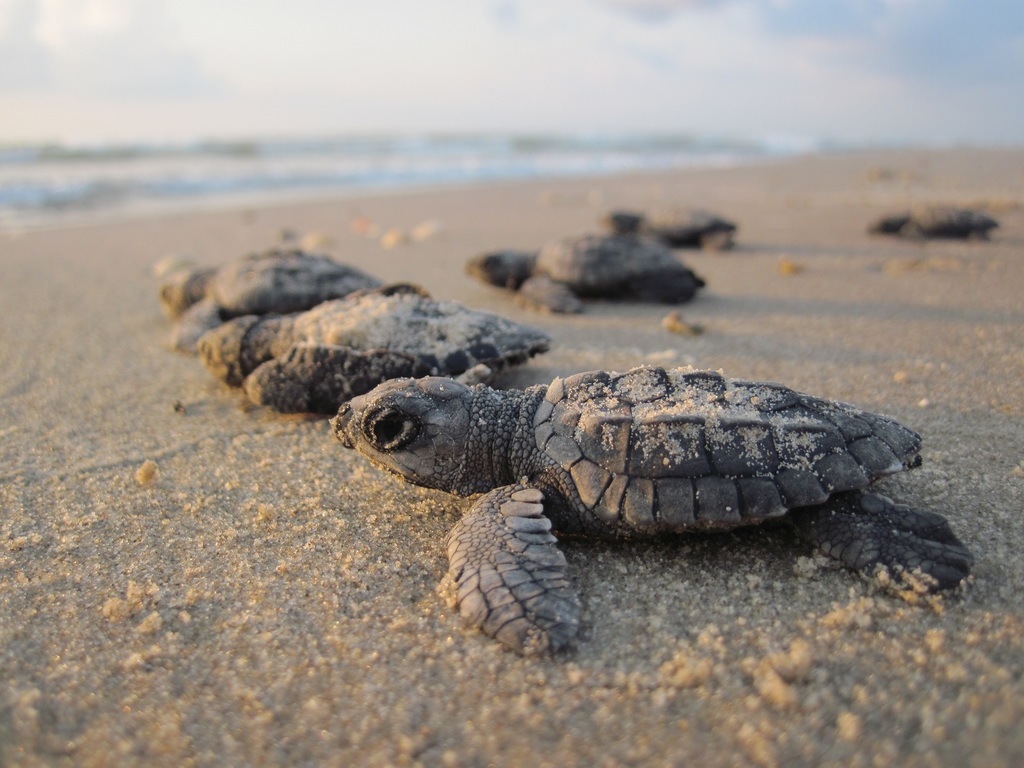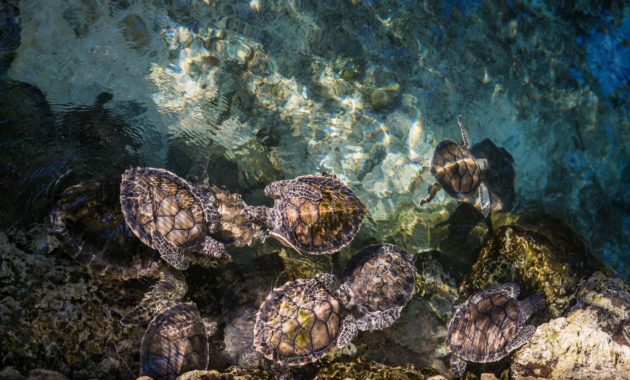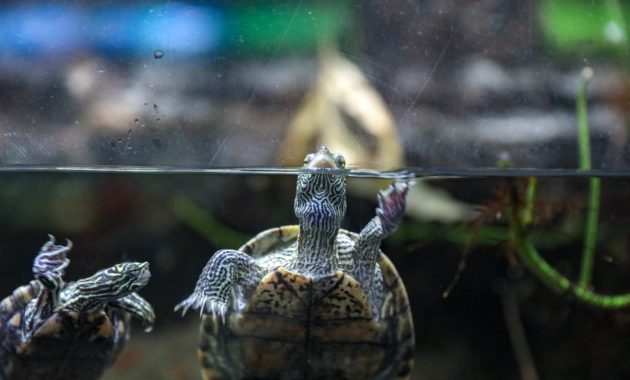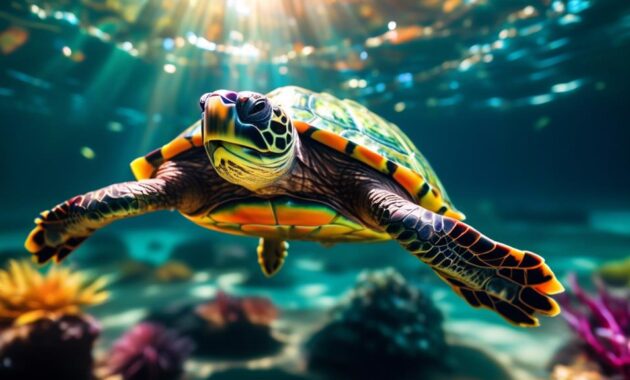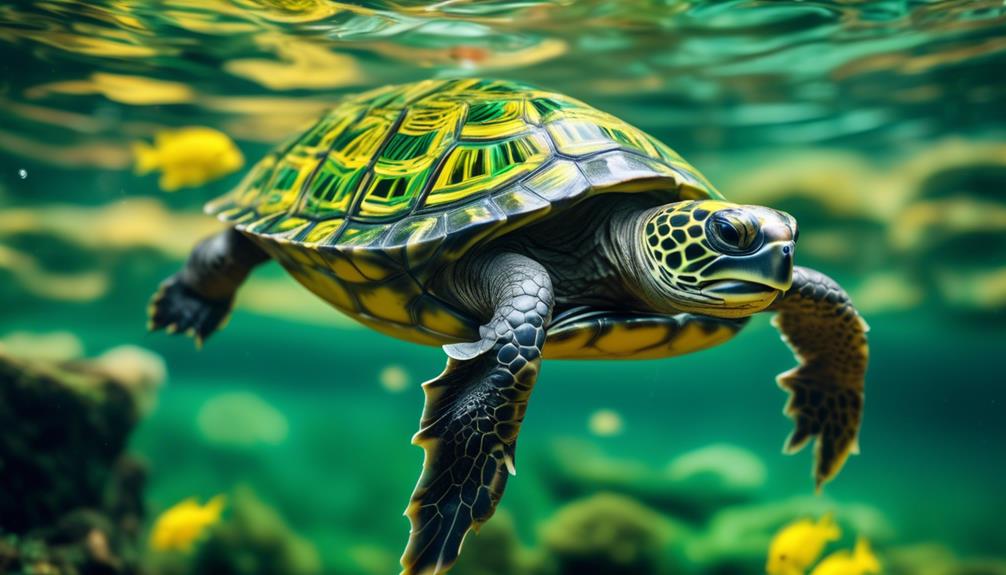
Are you under the impression that turtles are just slow-moving, uninteresting creatures? Think again!
When it comes to African Sideneck Turtles, prepare to be amazed by their fascinating facts and captivating behavior.
These incredible creatures possess unique features that set them apart from other turtle species. From their distinctive appearance and size to their diverse natural habitats, there is so much to discover about African Sideneck Turtles.
So, if you’re ready to uncover the secrets of these intriguing creatures and learn how to care for them, then keep reading. You won’t want to miss out on the fascinating world of African Sideneck Turtles!
Key Takeaways
- African Sideneck Turtles are found in Africa, Madagascar, and the Seychelles, inhabiting various natural habitats such as shallow pools, large lakes, and rivers.
- They have a friendly and adorable appearance with large, round eyes and a smiling mouth. Different species have different color variations.
- African Sideneck Turtles require a few inches of clean, filtered water for swimming and basking, along with appropriate tank decorations for a sense of security.
- Proper care includes providing UVB lighting, maintaining water and basking area temperatures, and regular cleaning and maintenance of the tank.
Size and Physical Characteristics
African Sideneck Turtles, known for their unique size and physical characteristics, have distinct traits that set them apart from other turtle species. These turtles can’t completely hide their heads in their shells like other turtles. Instead, they fold their heads underneath the upper edge of their shells. They vary in size, with some reaching up to a foot long. Different species have different adult sizes, ranging from 6-8 inches to 20 inches.
African Sideneck Turtles also have sensory organs called barbels that extend from their lower jaws. These turtles are part of the Pelusios genus and are found in Africa, Madagascar, and the Seychelles. They inhabit various natural habitats such as shallow pools, large lakes, and rivers.
In terms of appearance, African Sideneck Turtles have slightly webbed feet and sharp, long claws. They’ve a friendly and adorable appearance with large, round eyes and a smiling mouth. Different species exhibit different color variations, ranging from tan to dark brown, gray, and black. The head is usually olive to brown with a black marking on the top.
When it comes to their care, African Sideneck Turtles shouldn’t be kept outdoors unless in a warm climate as they don’t hibernate. They require a few inches of clean, filtered water for swimming and basking, and filtration is necessary to maintain water quality. The enclosure should include driftwood, rocks for basking, and hiding places. Larger species require a 75-100 gallon aquarium, while smaller species can be kept in a 60-gallon tank.
Lighting the tank with incandescent or fluorescent bulbs is sufficient, but UVB bulbs are recommended for vitamin D3 production. A heater is necessary to maintain water temperature at 70-75°F and basking area temperature at 95-100°F. Regular cleaning and maintenance of the tank are also important for the turtle’s well-being.
Native Habitat and Distribution
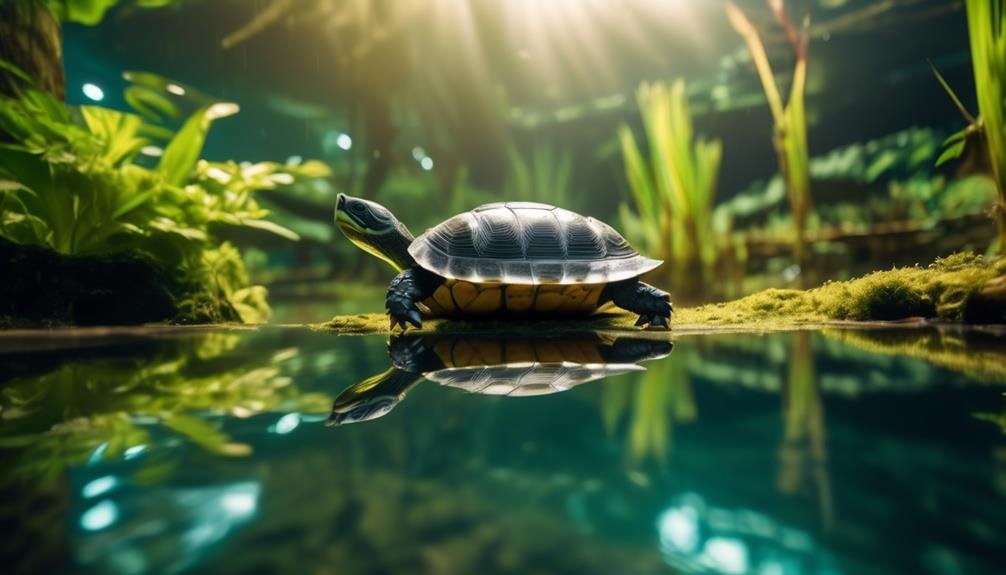
Where are African Sideneck Turtles naturally found and distributed?
African Sideneck Turtles, part of the Pelusios genus, can be found in Africa, Madagascar, and the Seychelles. They inhabit various natural habitats such as shallow pools, large lakes, and rivers. There are fifteen species within the Pelusios genus, with Pelomedusa subrufa being found in Madagascar and many parts of Africa.
These turtles are well adapted to their native environments, where they can explore the water and bask in the sun. It’s important to note that African Sideneck Turtles shouldn’t be kept outdoors unless in a warm climate as they don’t hibernate. Providing them with a suitable indoor habitat that mimics their natural environment is crucial for their health and well-being.
Sensory Organs and Adaptations

Sideneck turtles possess sensory organs known as barbels, extending from their lower jaws. These barbels play a crucial role in the turtles’ ability to navigate and find food in their aquatic environments.
Here are some fascinating facts about the sensory organs and adaptations of African Sideneck Turtles:
- Sensory Perception:
- The barbels contain numerous sensory cells that can detect vibrations and movements in the water.
- These sensory cells help the turtles locate prey, such as insects, small fish, and crustaceans, even in murky or dark waters.
- Adaptations for Survival:
- The ability to extend their necks and barbels allows African Sideneck Turtles to reach food sources that are otherwise inaccessible.
- The barbels also aid in the identification of potential predators, helping the turtles to quickly respond and avoid danger.
Color Variations and Markings

What are the different color variations and markings of African Sideneck Turtles?
African Sideneck Turtles exhibit a range of color variations and markings. Their shells can be various shades of brown, tan, gray, or black. The head usually has an olive to brown coloration, with a distinctive black marking on the top. Some individuals may have patterns or mottling on their shells, while others may have solid-colored shells.
Additionally, African Sideneck Turtles may have yellow or orange markings on their heads, necks, or limbs. These unique color variations and markings add to the beauty and individuality of each turtle. Observing the different patterns and colors of African Sideneck Turtles can be a fascinating experience for turtle enthusiasts.
Environmental Requirements for Keeping
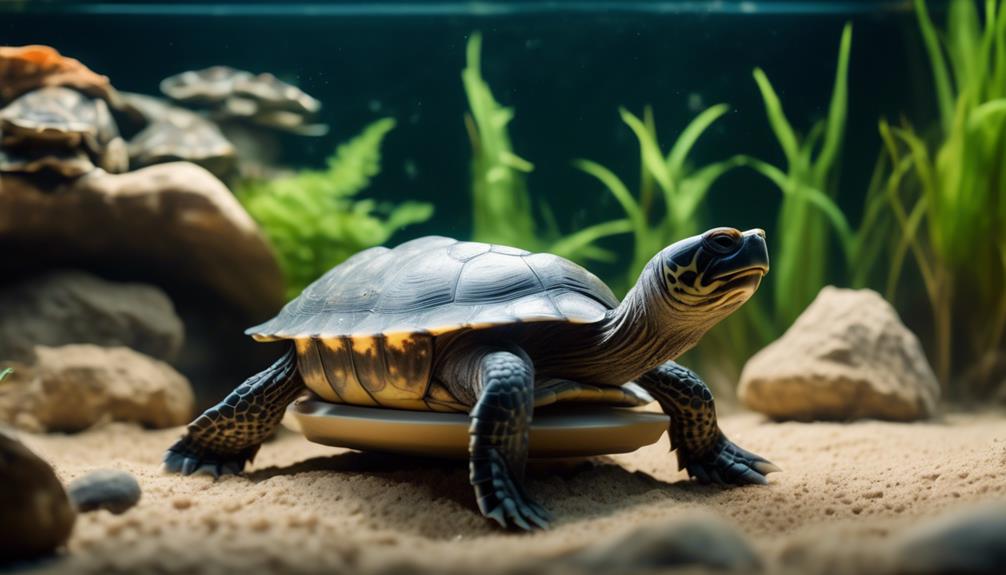
Now let’s shift our focus to the important aspect of providing the right environment for keeping African Sideneck Turtles. To ensure the well-being of these turtles, it’s crucial to meet their environmental requirements. Here are the key considerations:
- Habitat Setup
- Provide a few inches of clean, filtered water for swimming and basking.
- Use a filtration system to maintain water quality.
- Include driftwood, rocks for basking, and hiding places in the enclosure decor.
- Larger species require a 75-100 gallon aquarium, while smaller species can be kept in a 60-gallon tank.
- Tank Maintenance
- Use incandescent or fluorescent bulbs to light the tank, and consider UVB bulbs for vitamin D3 production.
- Maintain water temperature at 70-75°F and basking area temperature at 95-100°F using a heater.
- Regularly monitor the temperature with a thermometer.
- Ensure the tank is clean and provide a sense of security through tank decorations.
Water and Tank Setup
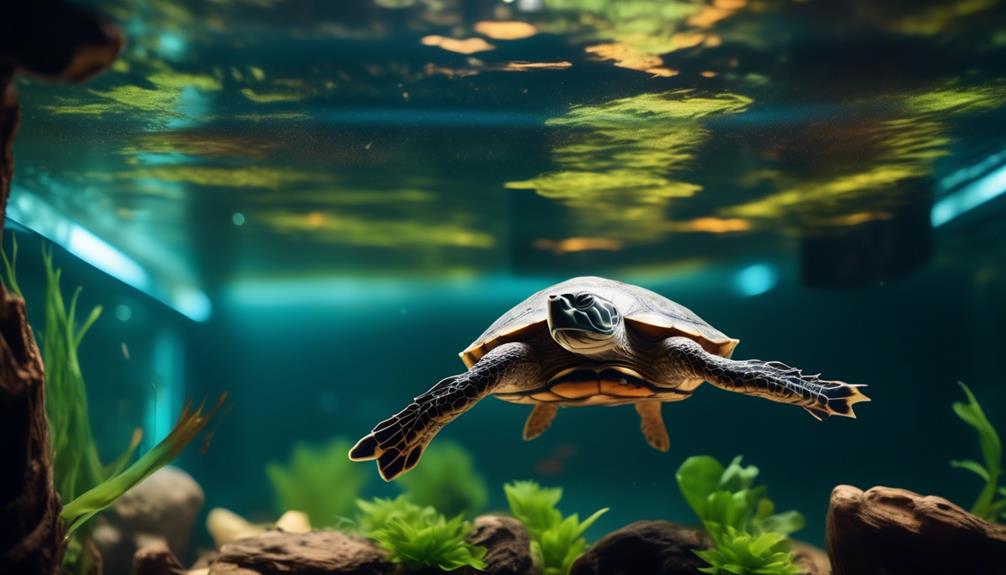
To properly set up the tank for your African Sideneck Turtles, it’s important to consider the water and tank setup. These turtles require a few inches of clean, filtered water for swimming and basking. It’s necessary to maintain water quality through filtration.
In terms of tank size, larger species need a 75-100 gallon aquarium, while smaller species can be kept in a 60-gallon tank. To create a suitable environment for your turtles, include driftwood, rocks for basking, and hiding places in the tank. Lighting the tank with incandescent or fluorescent bulbs is sufficient, but it’s recommended to use UVB bulbs for vitamin D3 production.
Additionally, a heater is necessary to maintain water temperature at 70-75°F and the basking area temperature at 95-100°F. Regular cleaning and maintenance of the tank are essential for the turtle’s well-being.
Lighting and Temperature Requirements
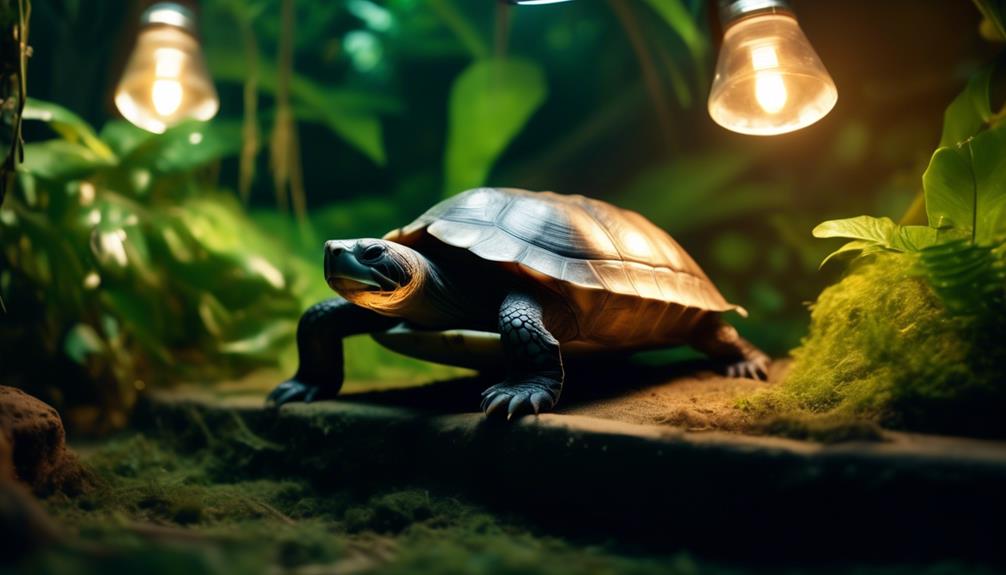
Now, let’s delve into the lighting and temperature requirements for your African Sideneck Turtles to ensure their well-being in their tank setup. Here are some key points to consider:
- Lighting:
- Incandescent or fluorescent bulbs are sufficient for lighting the tank.
- It’s recommended to use UVB bulbs to promote vitamin D3 production.
- Temperature:
- A heater is necessary to maintain the water temperature at 70-75°F.
- The basking area temperature should be kept at 95-100°F.
- Regularly monitor the temperature with a thermometer to ensure it remains within the appropriate range.
Tank Decorations and Security
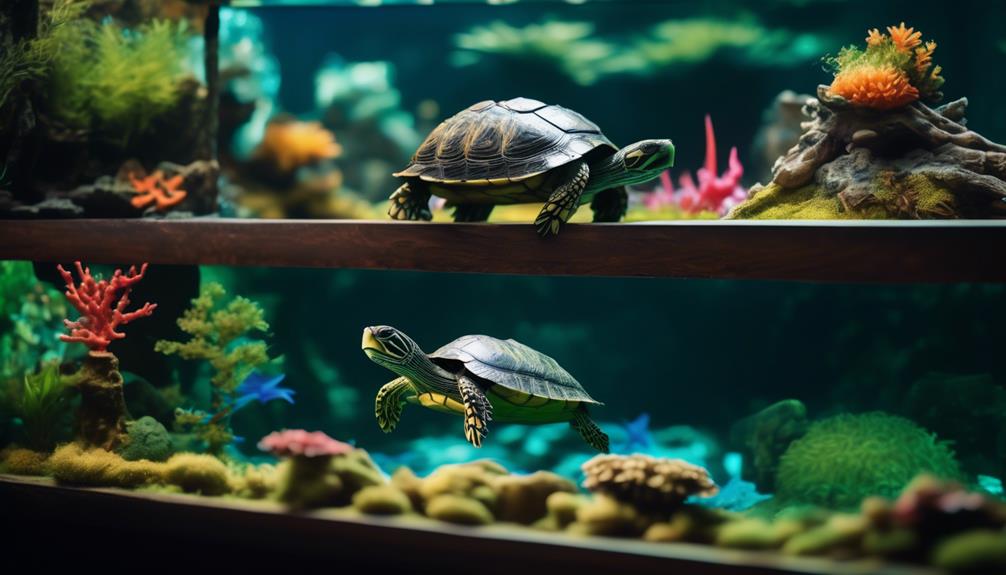
Consider creating a comfortable and secure environment for your African Sideneck Turtles by carefully selecting tank decorations. Provide them with hiding places and basking spots to make them feel safe and secure. Here is a table showcasing some suitable tank decorations:
| Decoration | Purpose |
|---|---|
| Driftwood | Provides a natural and appealing basking area |
| Rocks | Offers hiding spots and platforms for climbing |
| Plants | Adds visual appeal and provides shade |
| Caves | Creates hiding places for the turtles |
| Substrate | Mimics the turtles’ natural habitat |
Maintenance and Care Guidelines
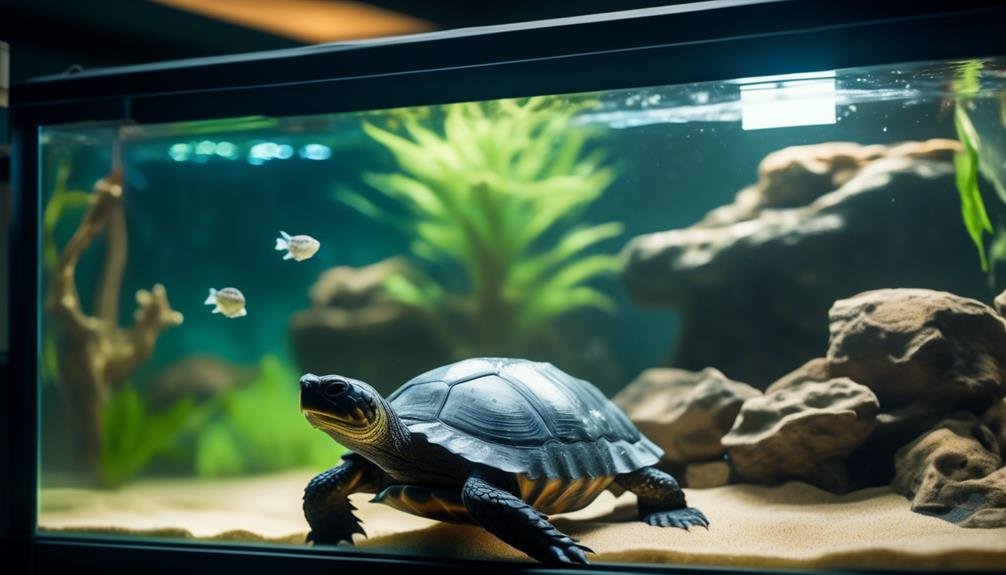
Creating a suitable environment for your African Sideneck Turtles includes not only providing tank decorations but also following maintenance and care guidelines to ensure their well-being. Here are some essential guidelines to keep in mind:
- Water and Tank Maintenance:
- Ensure the turtles have a few inches of clean, filtered water for swimming and basking.
- Regularly clean and maintain the tank to ensure water quality.
- Tank Size and Decor:
- Larger species require a 75-100 gallon aquarium, while smaller species can be kept in a 60-gallon tank.
- Include tank decorations such as driftwood, rocks for basking, and hiding places to provide a sense of security for the turtles.
- Lighting and Temperature:
- Use incandescent or fluorescent bulbs for tank lighting, but it’s recommended to use UVB bulbs for vitamin D3 production.
- Maintain the water temperature at 70-75°F and the basking area temperature at 95-100°F using a heater and thermometer for monitoring.
Following these guidelines will help ensure the well-being and happiness of your African Sideneck Turtles.
Frequently Asked Questions
How Do African Sideneck Turtles Protect Themselves if They Can’t Completely Hide Their Heads in Their Shells?
African Sideneck Turtles protect themselves by folding their heads underneath the upper edge of their shells. Even though they can’t completely hide their heads, this position provides them with some protection from potential threats.
Can African Sideneck Turtles Live in Cold Climates and Hibernate Like Some Other Turtle Species?
No, African Sideneck Turtles cannot live in cold climates and hibernate like some other turtle species. They require a warm climate and do not hibernate, so they should not be kept outdoors in colder regions.
Are There Any Specific Adaptations or Unique Features That African Sideneck Turtles Have to Help Them Survive in Their Natural Habitats?
There are specific adaptations and unique features that African Sideneck Turtles have to help them survive in their natural habitats. They fold their heads under their shells and have sensory organs called barbels.
Do All African Sideneck Turtles Have the Same Color Variations and Markings, or Do They Differ Between Species?
African Sideneck Turtles have different color variations and markings between species. Some are tan, dark brown, gray, or black. The head is usually olive to brown with a black marking on top.
Besides the Size of the Turtle, What Other Factors Should Be Considered When Setting up the Tank and Creating the Ideal Environment for an African Sideneck Turtle?
When setting up the tank for an African Sideneck Turtle, consider factors like water filtration, enclosure decor, and appropriate tank size. Ensure proper lighting, temperature, and monitoring for their well-being.
What Makes African Sideneck Turtles and Alabama Red-Bellied Turtles Different?
African Sideneck Turtles and Alabama Red-Bellied Turtles have distinct physical features and habitats. The elusive redbellied turtle Alabama thrives in freshwater bodies, while the African Sideneck prefers a more tropical environment. Their shell shapes and colors also vary, with the African Sideneck having a smoother, more oval-shaped shell.
Conclusion
In conclusion, African Sideneck Turtles are truly fascinating creatures with their unique appearance and behavior. From their inability to retract their heads into their shells to their diverse habitats and care requirements, these turtles never fail to captivate reptile enthusiasts.
Whether you’re considering keeping one as a pet or simply interested in learning more about them, African Sideneck Turtles offer an intriguing glimpse into the incredible world of reptiles. So dive in and explore the wonders of these remarkable turtles!

